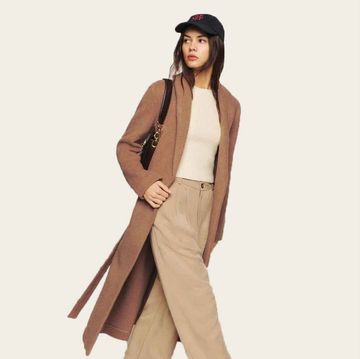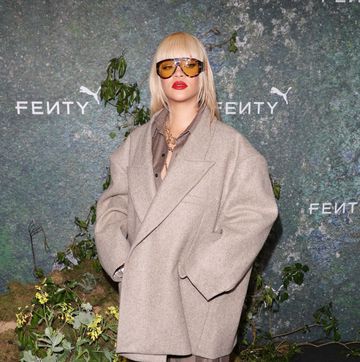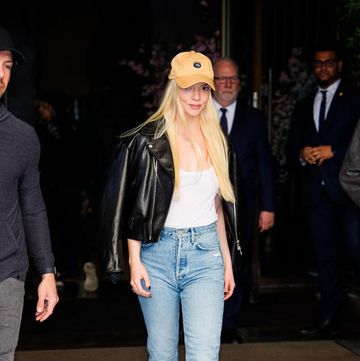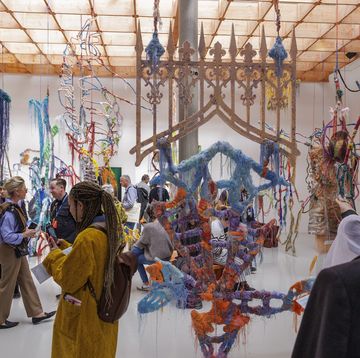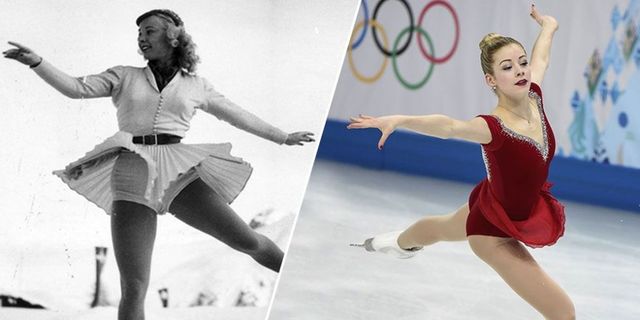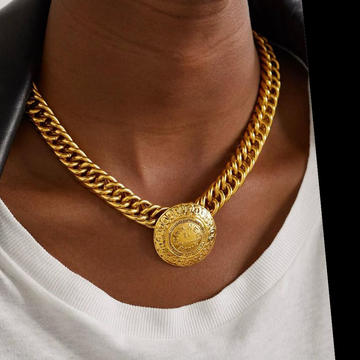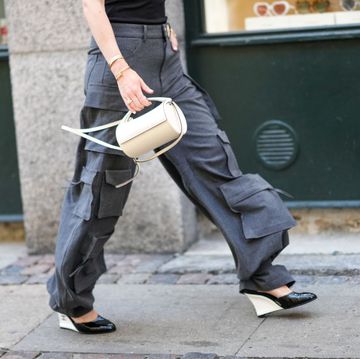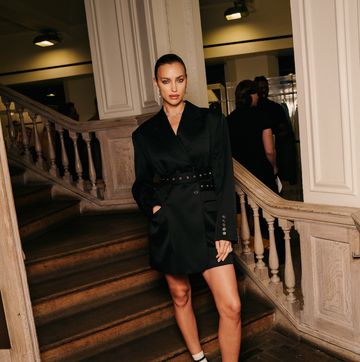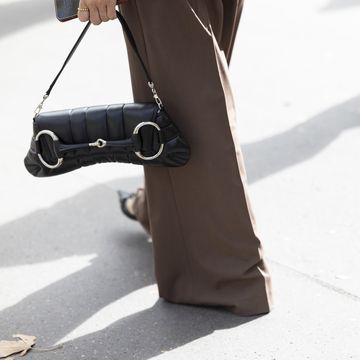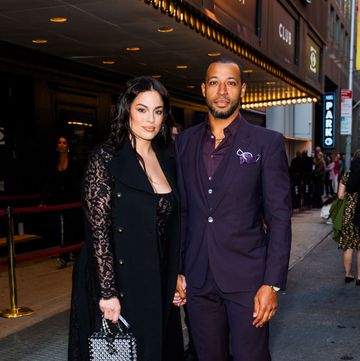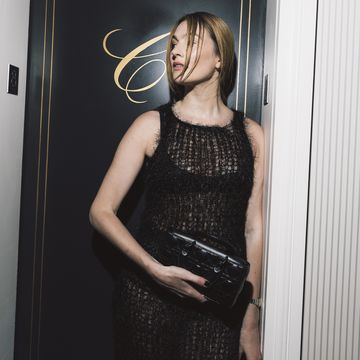1924
 Getty Images
Getty ImagesHerma Planck-Szabo of Hungary (left), Ethel Muckelt of England (center) and Beatrix Loughran (right) of the U.S.A. pose in sweater and skirt combinations at the first-ever Winter Olympics in Chamonix, France. Longer skirts paired with cashmere sweaters was a common combination for women ice skaters in the '20s.
1936
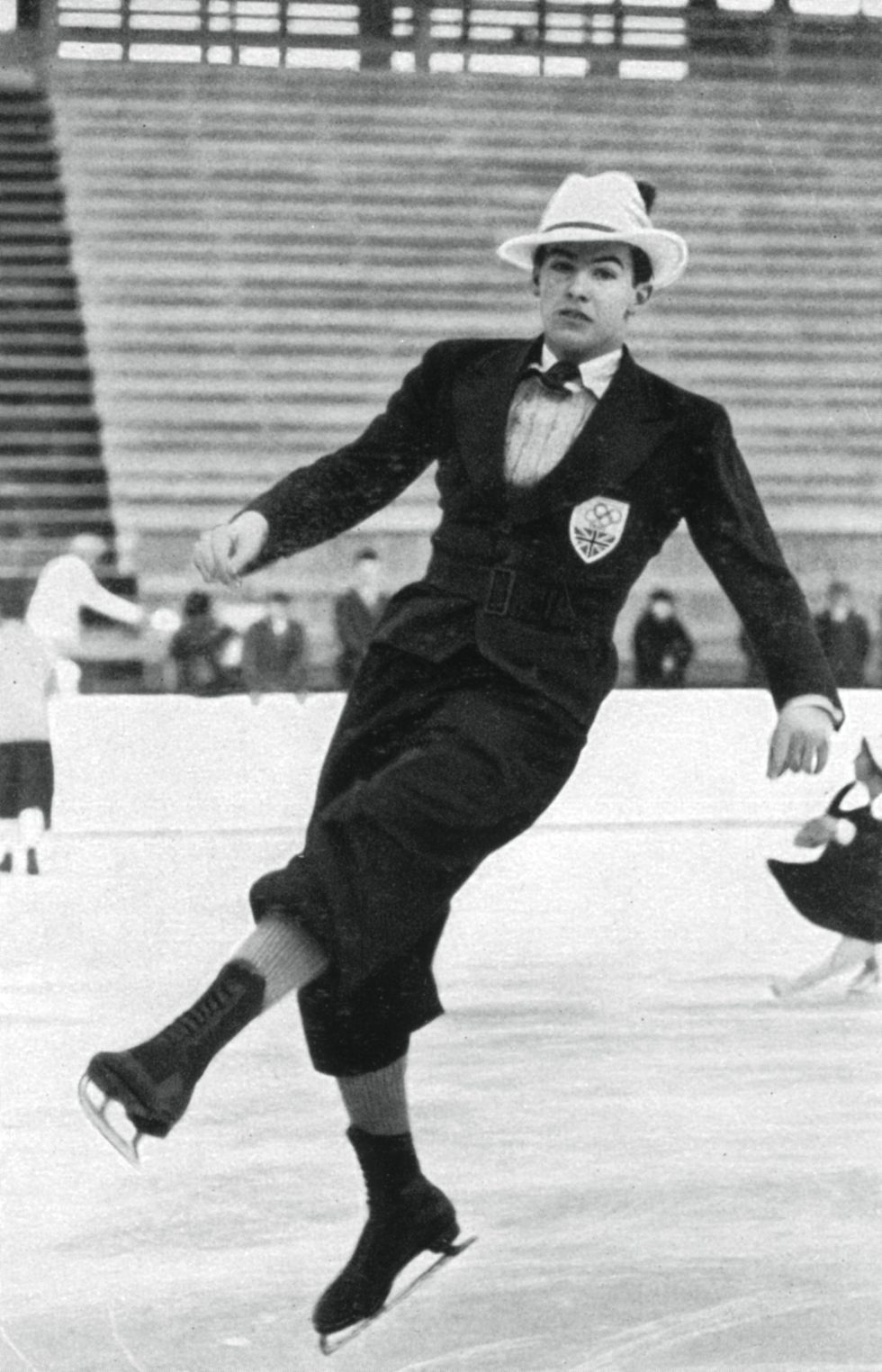 Getty Images
Getty Images'Men used to wear suits in the '30s and '40s to compete,' Weir says — he prefers today's costumes over the dressier versions (see slide #10 for why). Here, British ice skater Jack Edward Dunn wears a suit and a stylish hat to top it off.
1936
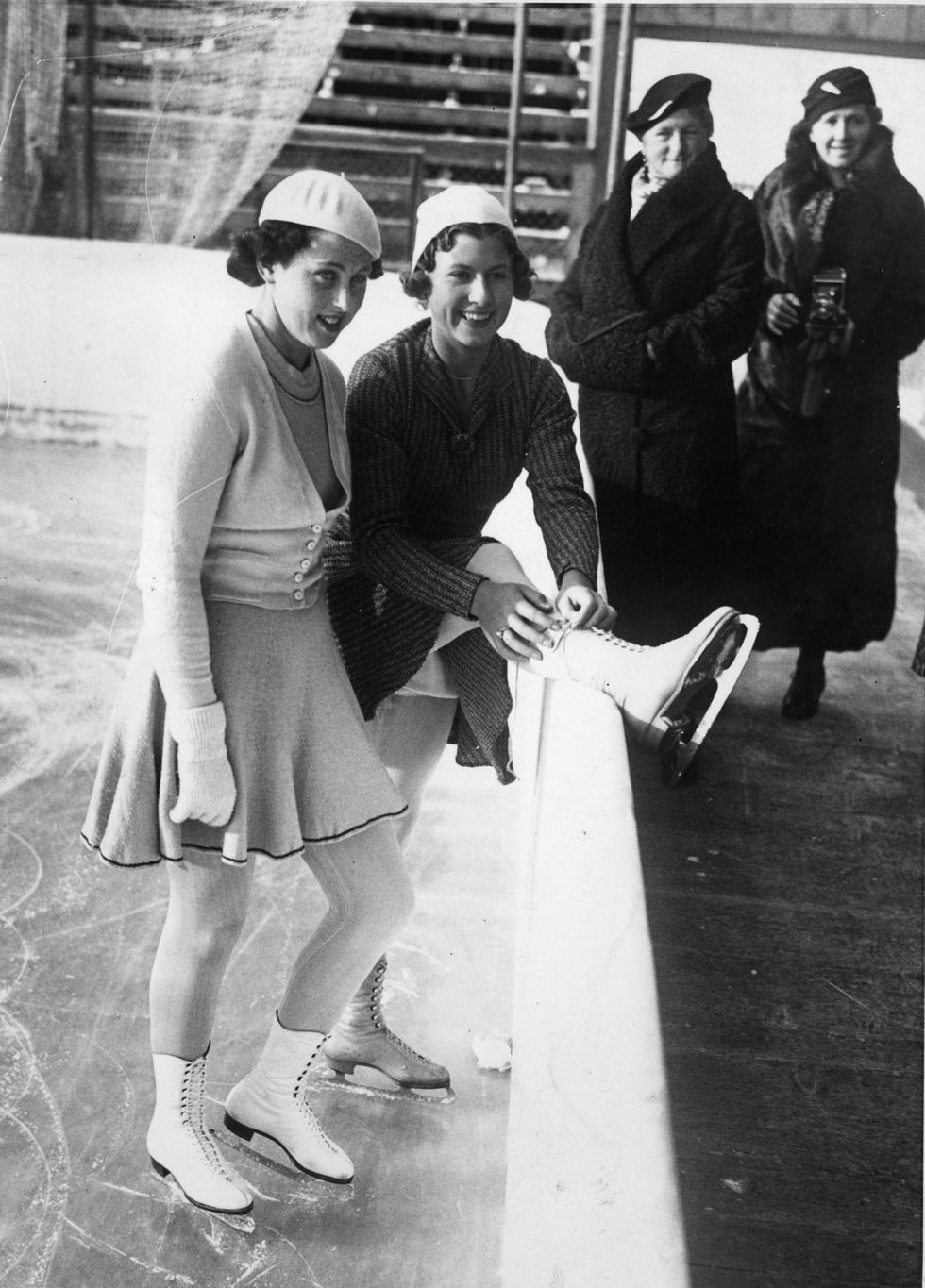 Getty Images
Getty ImagesBritish skater Cecilia Colledge (right) and German skater Viktoria Lindpaintner (left) on the rink in their Olympic outfits. Lindpaintner went with a matching knit shirt and skirt with a buttoned cardigan, while Colledge wore a pinstriped blazer, but both wore matching white hats. Hats are riskier to wear in competition today because skaters receive a deduction if any part of their costume falls onto the ice.
Advertisement - Continue Reading Below
1948
 Getty Images
Getty ImagesHere, Gretchen Merrill represents the United States at the 1948 Winter Olympics in a white ensemble featuring a pleated skirt and button-down shirt. Belts were common accessories in the earlier years of the Olympics, but started to disappear by the 1960s-70s when one-piece costumes became more common.
1956
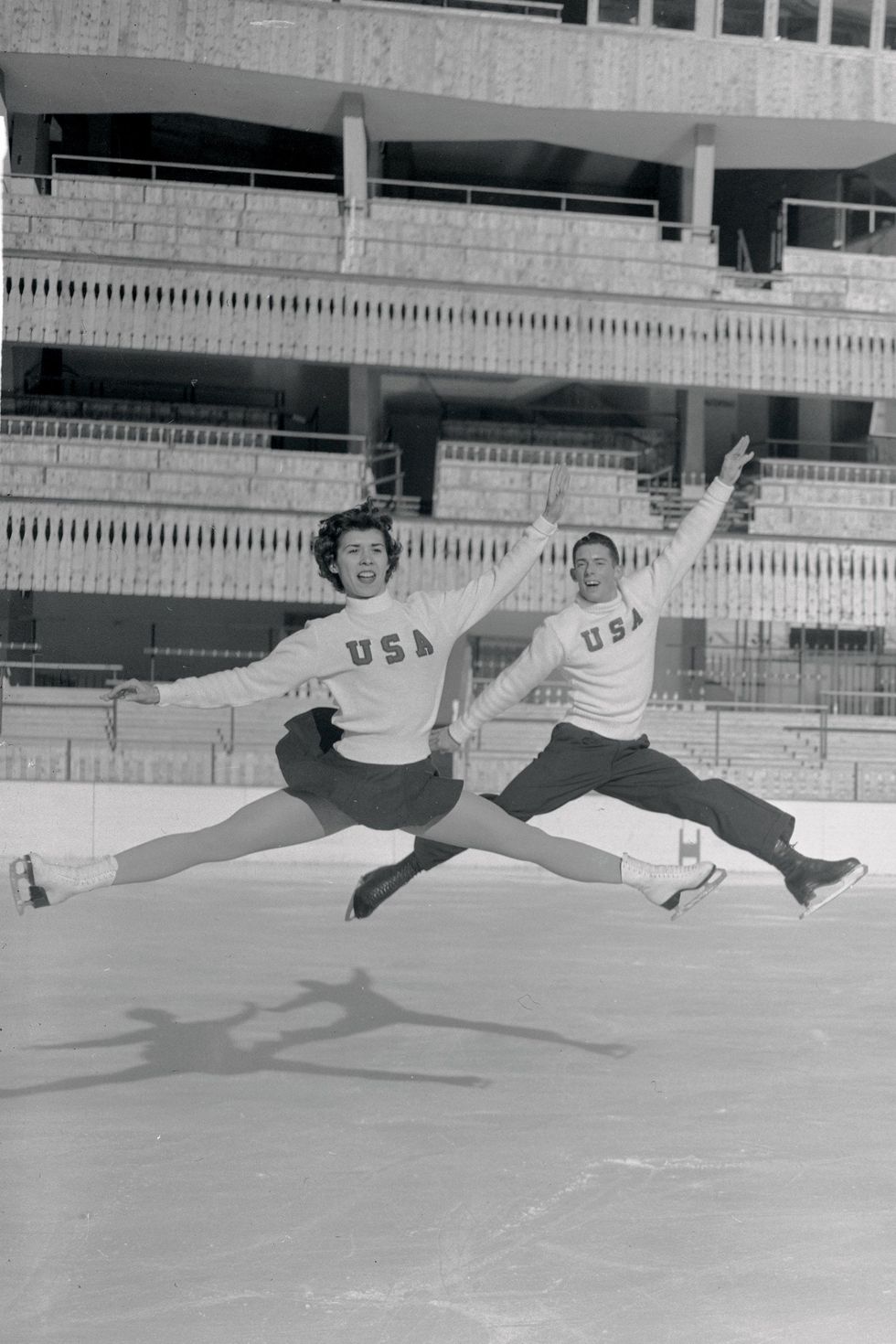 Getty Images
Getty ImagesAmerican skaters Carole Ormaca and Robin Greiner get some last-minute practice in for the 1956 Winter Olympics in matching U.S.A. sweaters and dark bottoms.
By the 1940s and '50s, short skirts (rather than ankle-length) had become more frequent for women after skater Sonja Henie popularised them, and they've become a staple of women's figure skating ever since.
1964
 Getty Images
Getty ImagesLiudmila Belousova and Oleg Protopopov of the Soviet Union compete in pairs figure skating with matching black and white ensembles. 'In the '40s, '50s, and '60s skaters' public image was definitely much more demure. Costumes weren't as garish and flamboyant and over the top as they may seem now,' Weir says.
Advertisement - Continue Reading Below
1976
 Getty Images
Getty ImagesWith the '70s (and its disco culture) came more bright and colourful costumes like Dorothy Hamill's sunshine yellow costume with rhinestone details along the neckline. It wasn't until the late '60s and into the '70s that rhinestones and sequins first started to pop up along necklines, sleeves, and hems.
'Chiffon and lamé are much favoured materials, with sequins and other decorative trimmings used in many imaginative ways,' wrote Howard Bass in his 1968 book Winter Sports. 'Generally speaking, the simpler and brighter the colour of the costume the more pleasing the effect.'
1988
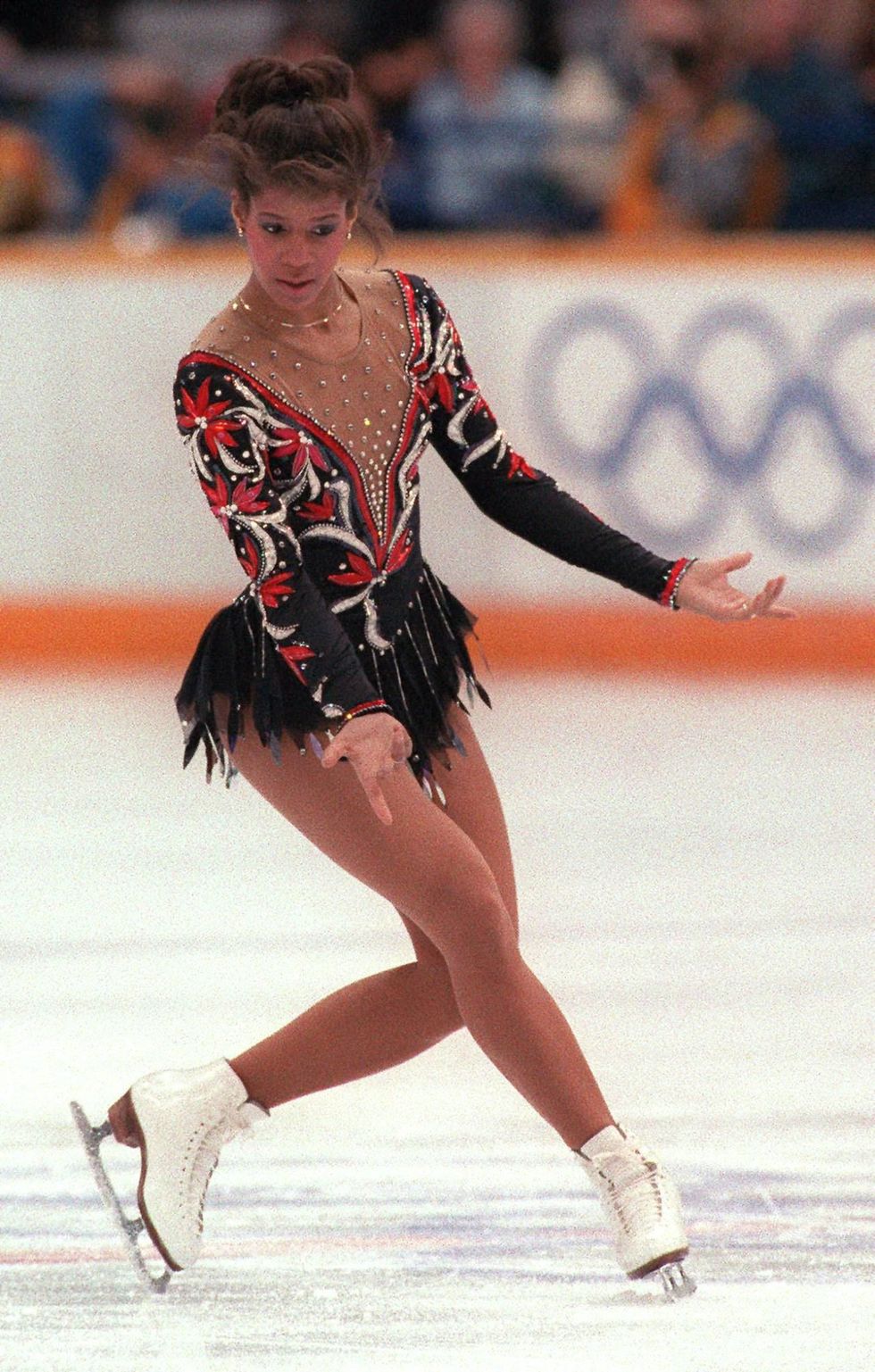 Getty Images
Getty Images'As we got into the '80s and '90s and 2000s, costumes really became a character in the performance,' Weir says. This is illustrated by American skater Debi Thomas's red and black costume with a rhinestone embellished mesh neckline and silver accents. By the '80s rhinestones were a full-fledged phenomenon and were used much more frequently than in past decades.
The beauty trends of the '80s, such as big hair and bright eyeshadow, also found their way into the Olympics. After the 1988 Olympics, strict clothing rules were passed because Russian skater Katarina Witt opted for strategically-placed feathers instead of a full skirt to compete, and it was considered against the rules to wear a unitard or pants until the rule was repealed in 2006.
1994
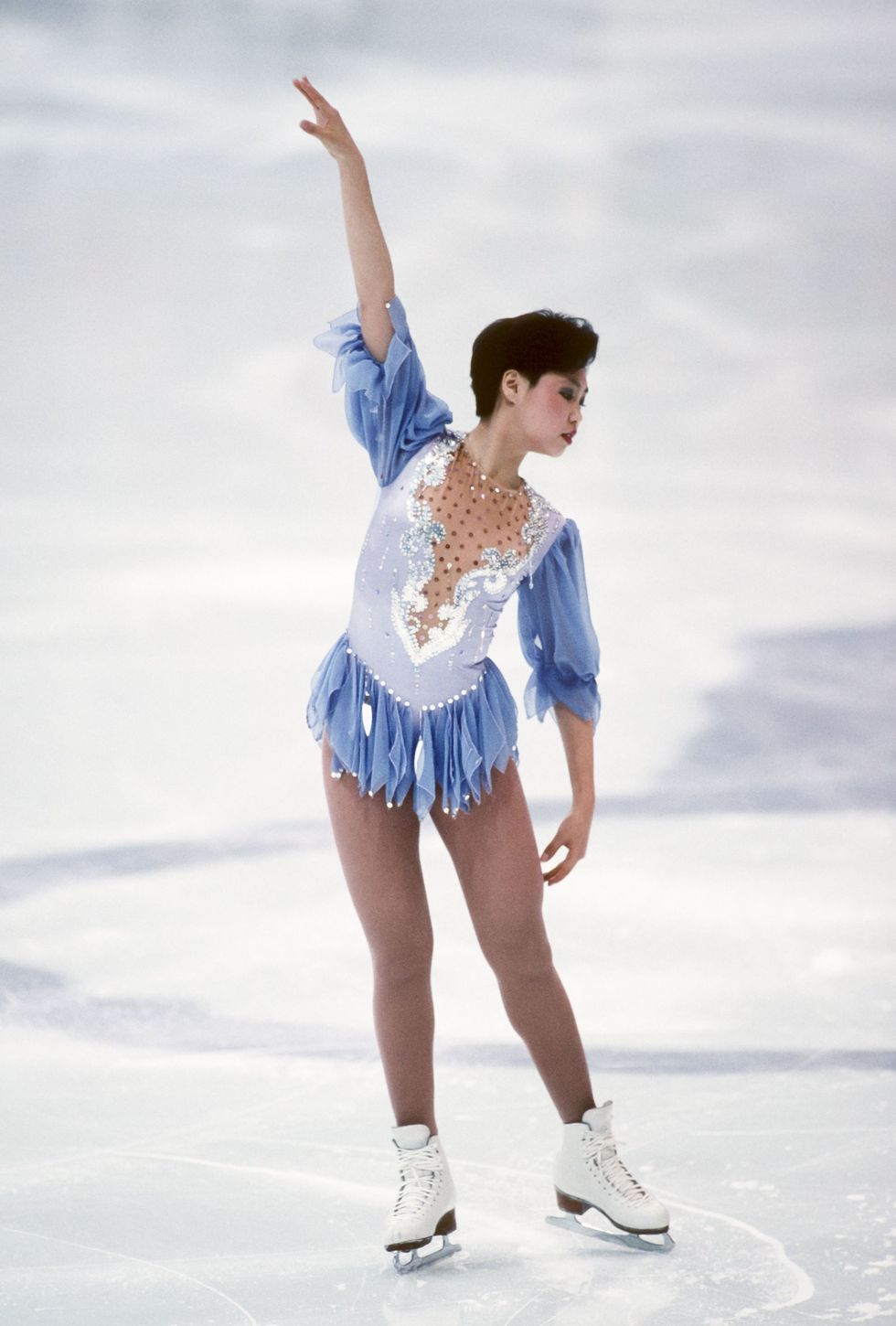 Getty Images
Getty ImagesSleeveless costumes were not allowed until the '90s, whereas now skaters can choose whether or not they want to compete with sleeves.
Chinese skater Chen Lu opted for elbow-length sleeves and wore this periwinkle blue costume with rhinestone details to compete in the Lillehammer Olympics in Norway. She won the bronze medal – China's first-ever medal in figure skating.
Advertisement - Continue Reading Below
2006
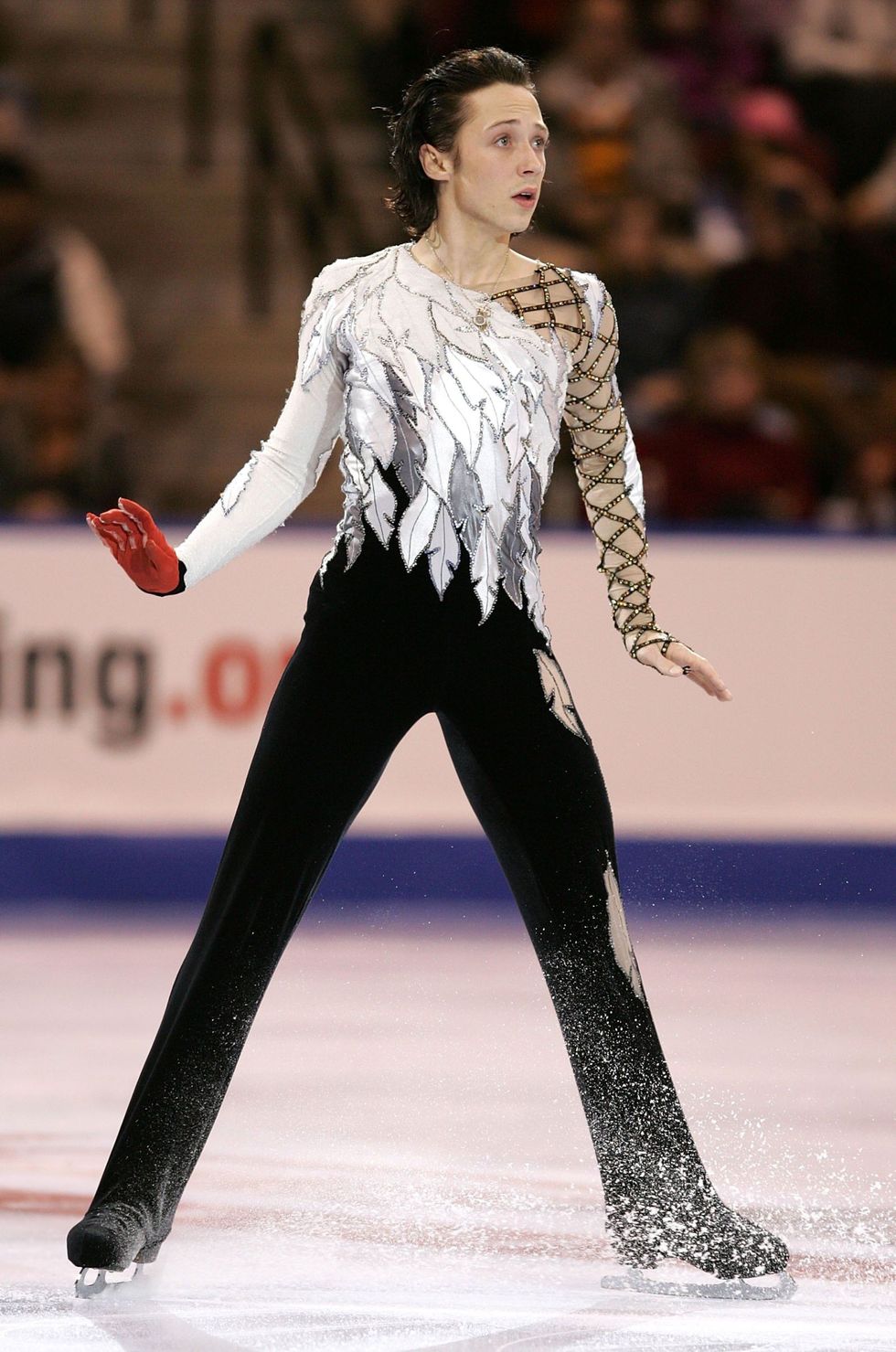 Getty Images
Getty Images'Every costume ... [is] created with the idea that you're going to live the biggest moment of your life in that garment,' Weir says. 'Every video of you that's on television is going to be forever, and you want to have a costume that really relates to that.' His favourite costume of his own? This swan costume which he fittingly wore to skate to a song titled 'The Swan.' 'It was everything that I wanted out of an Olympic costume. It was memorable, it went with the music, I felt great in it.'
2010
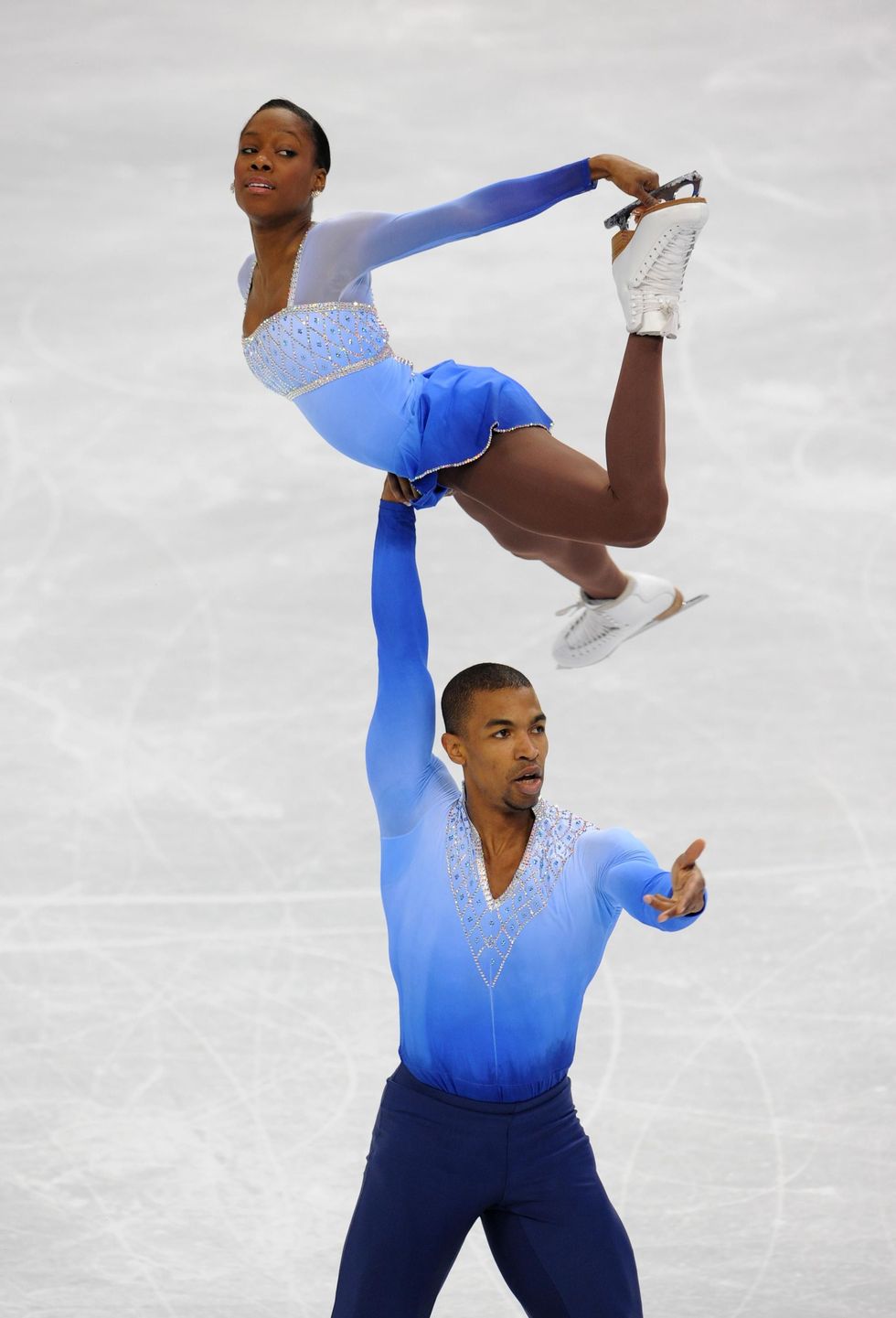 Getty Images
Getty ImagesFrench skaters Vanessa James and Yannick Bonheur performing a lift at the 2010 Winter Olympics in Vancouver in matching purple ombré outfits.
According to the International Skating Union, 'clothing of the Competitors must be modest, dignified and appropriate for athletic competition – not garish or theatrical in design. Clothing may, however, reflect the character of the music chosen.'
2014
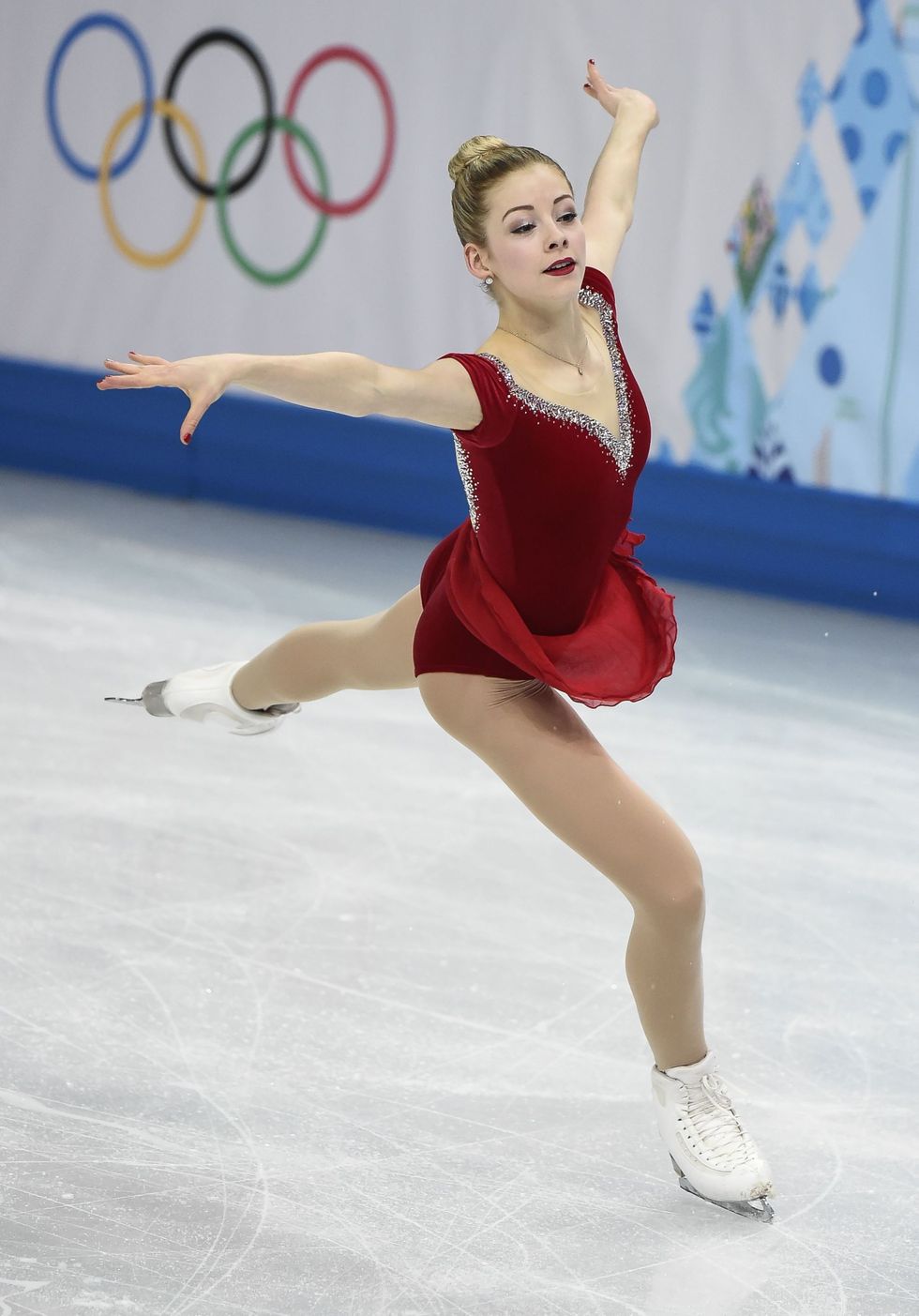 Getty Images
Getty ImagesOver the decades as necklines dipped lower, mesh became more popular, but necessary in preventing wardrobe malfunctions while still blending into the Olympian's skin. In 2014, Gracie Gold stunned in a red costume with silver rhinestones along the neckline and back.
'I love an amazing, beautiful skating dress,' said Project Runway contestant and ice skating fashion blogger Nick Verreos in an interview with The Boston Globe. 'But I also love when a look goes horribly wrong. Good or bad, I just don't want to be bored.'
Advertisement - Continue Reading Below
Advertisement - Continue Reading Below
Advertisement - Continue Reading Below

